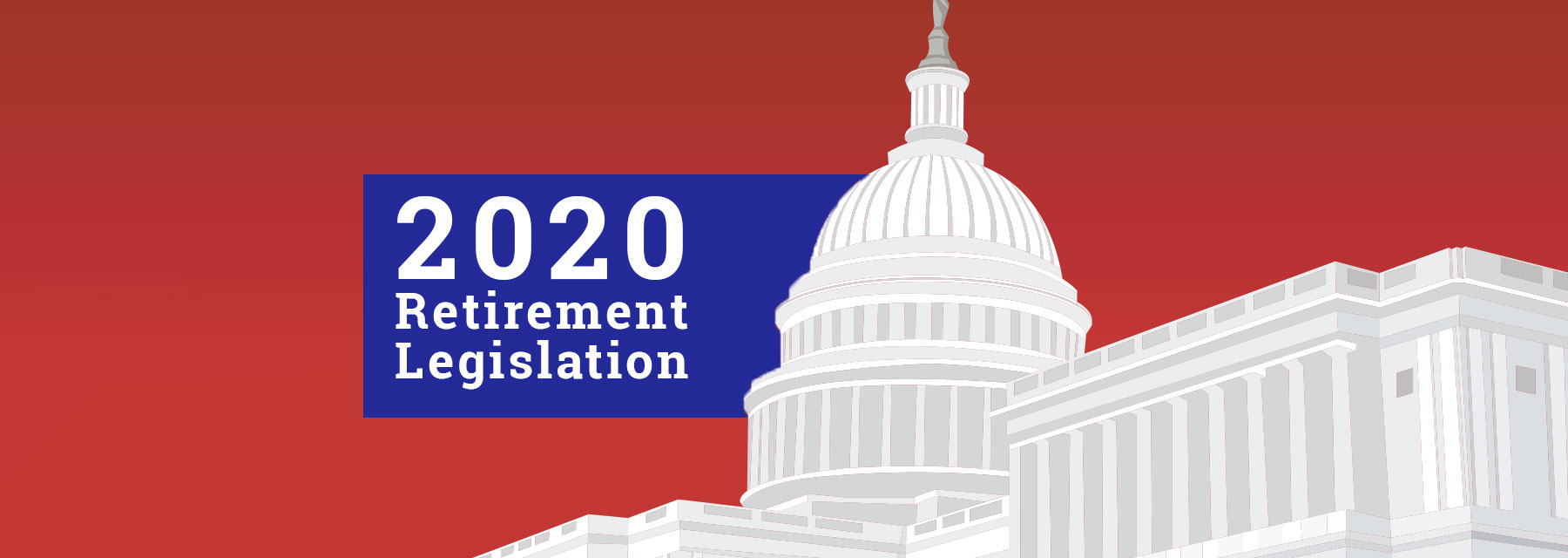Over the last few months, government agencies have responded to COVID-19 with numerous relief options for individuals and businesses. As part of this response, there have been unprecedented exceptions and extensions provided to many aspects of retirement plan benefits, operations, and reporting. This article brings together top takeaways and reference links from the recent legislative and regulatory changes impacting retirement plan sponsors and participants.
Extended Tax Filing Deadlines
Despite a myriad of COVID-19-related tax relief, retirement plan 5500 filings remain untouched. This is unsurprising as the 5500 filing has long had an extension protocol available through IRS Form 5558.
For example, with Form 5558, the common December 31st plan year-end deadline can be extended from the standard deadline of July 31st to October 15th. This means retirement plan sponsors with December year-end plans are fast approaching the July 31st deadline. If you are planning to extend your Retirement 5500 filing beyond July 31st, you should work with your retirement recordkeeper to file the IRS Form 5558 by July 31st.
To learn more, read our recent blog article.
E-Disclosure Expansion
The Department of Labor (DOL) issued a final regulation for satisfying ERISA’s participant disclosure delivery requirements for retirement plans. This is very exciting news as it reduces cost and streamlines a particularly cumbersome part of the retirement plan compliance. Below are the key highlights:
- Notice and access on a website: After sending an initial notice in paper, covered documents (documents that the administrator are required to furnish pursuant to Title I of ERISA) can be posted on a website or other electronic repository, such as a mobile application, if notification of internet availability is furnished to the covered individuals at the identified electronic address.
- Direct delivery by email: After sending an initial notice in paper, covered documents can be sent directly by email to covered individuals either via an attachment or in the content. Other electronic addresses, such as smart phones, are excluded.
- Terminated participants may receive electronic notices: This provision requires that the plan sponsor be able to maintain updated records of their email addresses or mobile telephone numbers. If the plan sponsor is using employer-provided email addresses to provide documents electronically, then the plan sponsor must request a new email address that will allow the individual to continue to receive notices following termination of employment.
To learn more, read our recent blog article.
CARES Act Provides Relief for Retirement Plan Sponsors & Participants
FOR EMPLOYERS
- Timeliness of plan contributions during COVID-19: Salary deferral contributions must generally be forwarded to the plan at the earliest date they can reasonably be segregated from the employer’s assets and no later than the 15th business day of the month following the payroll month. There is a seven-business-day safe harbor for plans with 100 or fewer participants.
The IRS issued a notice providing relief in the event of a temporary delay in meeting this standard during the Relief Period will not be an ERISA violation if it is due solely to the COVID-19 outbreak and both employers and service providers act reasonably, prudently and in the best interest of employees to forward these payments to the plan as soon as administratively practicable under the circumstances. - Furloughed employees and retirement benefits: Rather than using a bona-fide termination, a furlough places an employee in a temporary, non-duty, non-pay status because of lack of work or funds, or other non-disciplinary reasons. This is a type of leave of absence, and typically is not considered a severance of employment regarding activating a distributable event in a retirement plan. Which also means loan payments follow the plan document’s leave of absence procedures.
- Partial plan terminations: If a partial plan termination has occurred, Internal Revenue Code Section 411(d)(3) requires that all affected employees who had a severance from employment during the period must be fully vested in their accrued benefits to the extent funded on that date or in the amounts credited to their accounts.
To learn more, read our recent blog article.
FOR PARTICIPANTS
The CARES Act provides significant withdrawal relief for eligible participants for qualifying coronavirus-related reasons. These include adverse financial consequences due to being quarantined, furloughed, laid off or work hours reduced; being unable to work due to the lack of childcare; or closing or reducing hours of a business owned or operated by an individual. These CARES Act distributions are more favorable than standard hardship withdrawals including those for Federal Emergency Management Agency (FEMA)-declared disasters.
To learn more, read our recent blog article.
SECURE ACT passes after years of revisions
Just prior to the nationwide COVID-19 SIP, regulators made landmark retirement legislative enhancements in January 2020 with the passing of the SECURE Act. The SECURE Act provides administrative relief to plan sponsors and expands retirement plan coverage and savings opportunities to participants.
The Act also reduced antiquated, bureaucratic administration, increased tax incentives for employers, expanded coverage and distribution options for participants, and clarified long-time ambiguities around participant benefit protections.
To learn more, read our recent blog article.
Conclusion
With so many changes in the last six months still rolling out to retirement recordkeepers, and more changes forecasted in the near term, Sequoia is proud to be your consulting partner as you navigate these choppy waters. If you have any questions or need guidance on your program’s compliance and administration, please reach out to your Sequoia 401k Advisor, or connect with them directly in HRX.
Disclaimer: This content is intended for informational purposes only and should not be construed as legal, medical or tax advice. It provides general information and is not intended to encompass all compliance and legal obligations that may be applicable. This information and any questions as to your specific circumstances should be reviewed with your respective legal counsel and/or tax advisor as we do not provide legal or tax advice. Please note that this information may be subject to change based on legislative changes. © 2020 Sequoia Benefits & Insurance Services, LLC. All Rights Reserved
Pensionmark® Financial Group, LLC (“Pensionmark”) is an investment adviser registered under the Investment Advisers Act of 1940. Pensionmark is affiliated through common ownership with Pensionmark Securities, LLC (member SIPC). Pensionmark Financial Group, LLC/Pensionmark Securities, LLC and Sequoia are non-affiliated entities.




